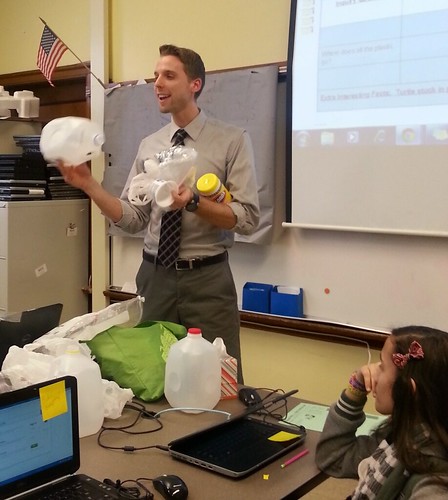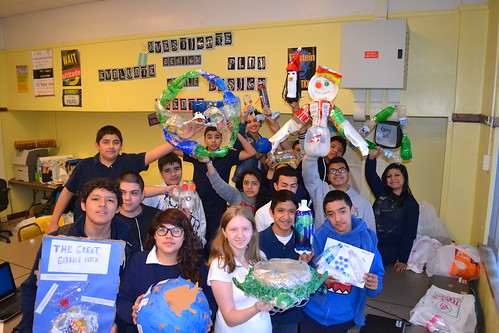Plastic Challenge

Plastic Challenge classroom exercise with Brad Parker. © Erin Potter
Overview
Climate Cycle’s Plastic Challenge is a 4-week (or longer) program in which students are educated on the plastic consumption/waste crisis through assemblies and classroom exercises, and subsequently empowered to take action around the issue in their own lives. Designed for both primary and secondary school audiences, the Plastic Challenge bridges the gap between education and action by giving students the tools necessary to achieve results.
Similar to the Sustainability Assembly Series, the basic structure of the Plastic Challenge remains consistent from school to school, with optional exercises and enrichment opportunities available to augment each stage of the program after the first week. For instance, after students perform an audit of their personal plastic consumption and move into the segment in which they reduce their plastic consumption, a host of optional discussion exercises can be incorporated into the reduction segment. An array of optional exercises ranging from math and science activities, to graphing exercises, to organizing a zero lunch day, to making a video or art installation can be a part of such customization.
Top student projects have the opportunity to be shared and showcased by students across social media platforms and at Climate Cycle events. Not only do the general public and event attendees have the opportunity to learn more about an important environmental issue and see firsthand what students are learning and doing to address it, students in turn have the opportunity to encourage attendees to take on their own Plastic Challenge. Thus, Climate Cycle’s mission of “inspiring students to green our world” can be brought into the greater population at large.
Goals
1. Educate students on the environmental crisis resulting from our single use plastic consumption.
2. Give students the opportunity to make a positive environmental impact in their own lives.
3. Help students see firsthand how the aforementioned positive environmental impact is magnified exponentially when carried out across a classroom, school and/or beyond.
4. Empower schools to make significant environmental impacts.
5. Develop STEM and critical thinking skillsets.

Locke students display projects created with recycled plastic. © Brad Parker
Try it yourself!
1. Keep track of your plastic consumption over the course of a week.
2. Consciously reduce your total plastic consumption over the course of a second week and continue to monitor your total plastic intake for that week.
3. Do some calculations! Compare the first week’s plastic consumption with the second week’s consumption both individually and as a household.
4. Finally, projections can be generated as to what the reduction in an individual’s plastic consumption would be if sustained over the course of a month, year, or even longer. In addition to the positive environmental effects - you’ll see, through real world experience, how the power of collective actions magnifies the impact of your efforts when extrapolated out over a household, entire building, a neighborhood, and even an entire city.